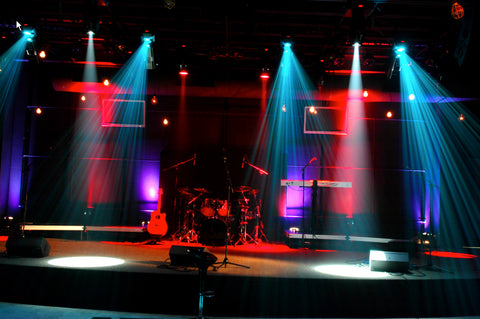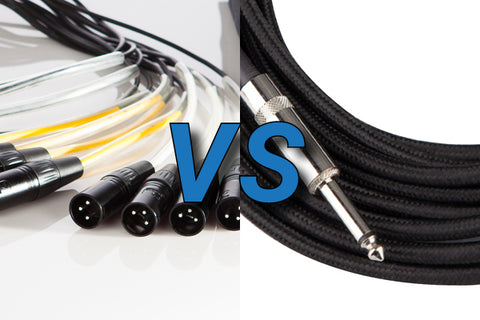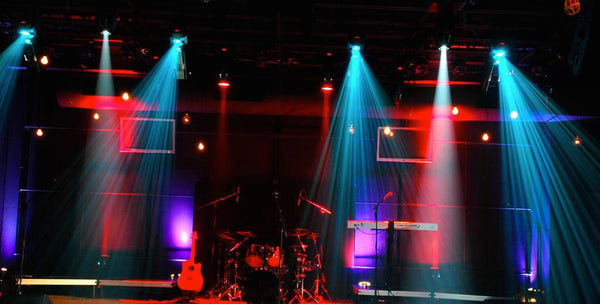-
Audio
-
Guitar
-
Bass
-
Blog
-
SALE
- Financing
- Support
- SINCE 1946
December 21, 2016

A good mixer is an essential component of a live show. Even though the band and audience members alike may go the whole night without even seeing the mixer, this little piece of equipment has a big role in providing the best possible sound to the stage and the house.
September 14, 2016

Whether you’re jamming with a garage band or playing stadiums, it’s essential to protect your hearing. Our hearing is one of our most valuable tools we have as musicians, and once it’s gone it’s gone for good. In fact, if you leave a gig with your ears ringing, permanent damage has already been done to your hearing. Furthermore, if you constantly expose yourself to excessively loud volumes over a long period of time, you may develop Tinnitus, which is a constant ringing in your ears. In severe cases, that ringing may turn into buzzing, humming, or even singing sounds. Any kind of additional voices in your head is definitely something you want to avoid.
September 03, 2016
Throughout the course of my career in audio production I have provided audio systems for hundreds of indoor and outdoor events. While the tools I utilize are often very similar, the approach I have towards each situation can vary significantly. Let’s take a look at what goes into the logistics behind each and what you can do to improve your audio quality in each situation. This article will deal with preparing for an outdoor show and how to decide what speakers to use.
August 12, 2016
I am frequently asked “which are better, active or passive speakers?” The short answer is “Neither.” The real answer is dependent on many variables. My production company currently has inventory of both active and passive speakers. We use both very frequently and often at the same events. Here are a few ideas that you might consider when choosing between active and passive speakers.
August 09, 2016

Knowing how to properly set the gain on each channel of your mixing console can go a long way in ensuring an optimal live or studio mix for your band. The gain knob, also referred to in some instances as the trim knob, is the first point of amplification and entry into your mixer. The term “trim” is also used, because it relates the high gain of the microphone pre-amp and the knob’s trimming back this gain. The purpose of the gain knob is to control the input volume of any instrument or microphone that you have plugged into that channel of the mixer or console.
July 28, 2016

While there’s no doubt that intentionally adding some echo or reverb to your band’s vocals can be a nice effect, the overbearing natural reverb and echo that results from the acoustical properties of certain concert halls, churches, and other venues can be a huge problem for your band’s overall sound and result in an unintelligible mess! If your band is all mic’ed up through the PA, playing and hearing mostly echo instead of instruments can make it really difficult to perform well, let alone stay in time and in tune with one another.
July 28, 2016

The standard three band equalization system has long been a mainstay of mixers and guitar and bass amplifiers. Even minor adjustments to an amp’s bass, midrange, and treble controls go a long way in shaping your tone. These EQ controls, sometimes called Low, MID, and HI on mixers, are very common, intuitive and effective. However, in a dense band mix, some extra flexibility may be needed to dial in your amps tone or fit each player in their spot for a cleaner mix. Many guitarists can quickly address these issues by engaging an equalizer pedal or toggling to a different pickup. However, using and understanding an amp or mixer with a mid sweep can open new doors of tone shaping without having to add any additional components to your setup.
July 12, 2016

If you’ve been around a mixing board, recording interface, guitar amp or a PA system, you’ve probably dealt with balanced and unbalanced inputs or outputs (although you might have not noticed the differences immediately)! This article will discuss the basic differences between the two connection types and what they mean for your pro audio rig.
June 23, 2016
A blown speaker is arguably one of the worst things that can happen to your pro audio rig, whether you are a sound pro, bassist, guitarist, or DJ. It may be a freak feedback, clipping amplifiers, or poor AC power, but it can happen to the best of us. Knowing the basic steps of what to do next after blowing a speaker will help you get your rig up and running as soon as possible. Here we are only looking at “abuse” causes of failures and not factory defective speakers. A defective speaker failure is diagnosed by looking at the speaker internally and is caused by misalignment, poor gluing or fragments in the coil gap. These failures are very rare and look much different than a blown speaker.
June 17, 2016

One of the biggest choices musicians and pro audio enthusiasts make when purchasing speakers is whether they should spring for passive or active speakers. Just like with any equipment, the right choice comes from a combination of understanding the main components of each and finding the one that best suits your application. This basic guide will cover the main differences between active and passive models and help you choose which one is better for your needs.
June 07, 2016

Power ratings can be one of the more confusing concepts, especially for newer players looking to find the perfect match of head and cab or to get a PA system up and running. Unlike power amplifiers and bass amp heads, which generally list a single rating or ratings at different impedances, speakers have up to three ratings listed, further confusing matters! But fret not- this article will break down the differences between these numbers and what they all mean.
How Power Handling is Determined
Speaker power handling is a very complex subject. But you need to understand the general ideas behind these ratings to prevent breaking your gear! For a practical, real world example, let’s take a look at the ratings of the Carvin Audio PM12.
Carvin Audio PM12: 300W continuous, 600W program, 1200W peak.
For most companies, these are real tested numbers, but they are not the same tests used in power amp or instrument amplifier testing. The power handling of a speaker is determined by the temperature rise of the speaker’s voice coil over a period of time. The unique thing is the input signal used to test the speaker. Because speakers use small wire to make up the voice coil, they do not hold up very well to the sine wave or single tone signals used in power amp testing. For speaker testing, the input signal is pink noise, which are essentially random sine wave tones of all the audio frequencies with the same energy level per octave.
You may be more familiar with white noise, which it is all frequencies with the same level regardless of octaves. To experience some white noise, turn up your guitar amp full or your mixer mic preamp. It’s that “Shhhhh” sound. If you turned down the presence or treble knob a little that would start to sound like pink noise. Pink noise sounds like it has more low frequency or bass content, and that’s the per octave part.
The pink noise signal for speakers has one more special ingredient, and that is how its peaks are limited which is called the crest factor. The crest factor corresponds to how high the peaks are above the average level. The average level is measured by an RMS voltage meter and this is called the continuous level. The crest factor is typically 6dB, which means the peaks in the pink noise are twice the voltage level of the continuous RMS measurement. So you say “twice, but the peak wattage is four times.” If we look at the resulting wattage on the speaker the equation is:
Speaker power = the square of the voltage / the impedance of the speaker or P=V2 / R
If you double the voltage at the peaks, it creates four times the wattage, because the voltage is squared. The program level is just a reference where the wattage has doubled and is not really a testing parameter.
If this sounds complicated, don’t worry- what you need to know is how these ratings apply to your day to day life using your gear.
What the Numbers Mean to You:
The continuous rating is the base line wattage that the cabinet can handle without risking any harm to the voice coil or other parts of the speaker. This is considering extended periods of use, like at a gig or rehearsal. If you have a 300 watt PM12, it can handle a 300W amplifier’s output. But remember never to clip your amplifier, because the clipping output of your amplifier is like putting four times the amp’s rating of RMS power into your speaker. The speaker can handle peaks of four times, but these are short clean audio peaks, not the continuous output of clipping. Clipping usually steals life from your speakers and the clipping signals really don’t make much sound, slamming the speaker all the way in or out. If the speaker is not moving it’s not making any sound, but the coil will still burn.
Time to demystify a myth here: “Under powering a speaker.” The continuous rating is not the minimum wattage you can put into your speaker. Using amplifiers that are under the continuous rating will not harm your speaker. Under powering a speaker will not bring the speaker to full output. On the other hand, you can under power a show by bringing too small a system for the show and running it into clipping. A speaker can handle some clipping but the amplifier’s rated wattage would have to be four times less than the speaker’s continuous rating to be safe for clipping. That’s a small amplifier at about 75 Watts for the PM12.
The program rating is the maximum wattage that the speaker can handle in bursts. This is usually the better amplifier wattage to shoot for when matching an amp to a speaker. The PM12 has a program ratting of 600W. If you use a 600W amplifier you have 3dB more of clean headroom before approaching clipping. Also, amplifiers are limited in their power supplies and usually only produce about twice more output on peaks, so this could produce the full 1200W peaks. Or at least that is in theory. This would then produce the full output of the speaker or Max SPL.
The peak rating is the maximum wattage the voice coils can take in very short peaks. As mentioned before, this is used if you are trying to achieve the maximum output of the speaker or Max SPL rating.
So, Which One Should You Go By?
A speaker’s continuous and program ratings are the most relevant to most musicians and pro audio enthusiasts. The peak rating details the upper limits of the speaker’s power handling capacity and max SPL. A good way to remember this is to think of your speaker like your vehicle. When driving your vehicle, you’ll be driving between 20-80 mph most of the time. This is like your speaker’s continuous to program rating- it is the common, day to day usage. The peak rating is akin to the top of your car’s speedometer. Yes, your car can go 120mph (don’t try it, you’ll get a ticket!) but it won’t be able to sustain that for very long without the risk of mechanical or thermal damage.
Question in Scott's comment:
May 19, 2016
An often overlooked aspect of a band’s live or studio sound is the type of microphones that are being used for the vocals or to mic up the instruments and drums. In fact, the choice of microphone used for these applications is nearly as important as what amps, guitars, or drum kits are being played!
Sign up to get the latest on sales, new releases and more…
NoFraud Frequently Asked Questions
"Make a joyful noise unto the Lord all of the earth; make a loud noise and rejoice and sing praises. Sing to the Lord with the harp and the voice of the psalm." - Psalm 98:4-5
© 2025 Carvin Audio.
Carvin Corp.
POS and Ecommerce by Shopify

I’m pondering a passive speaker with Full Range Power @ 8 ohms of 600w Continuous /1200w Program /2400w Peak.
I’m also looking at an amp with the following specs:
OUTPUT POWER
1 CHANNEL RMS continuous
- 8 ohms: 400 watts
- 4 ohms: 700 watts
- 2 ohms: 1150 watts
BOTH CH RMS continuous
- 8 ohms: 325/325 watts
- 4 ohms: 600/600 watts
- 2 ohms: 1000/1000 watts
BRIDGED RMS continuous
- 8 ohms bridged: 1200 watts
- 4 ohms bridged: 2000 watts
I have no idea which set of amp numbers to look at (1 ch, both channels, or bridged?) Would this amp be a good fit for this speaker? (I’d like the amp to power two of these speakers.)
Thanks for any input you can give me.
Answer:
Here is how I would approach this. First you are starting with the cabinet. This is fine, because you need to start somewhere, and the speaker is probably better. Your choice of cabinet has a continuous wattage of 600 watts and it is 8 ohm. You also mentioned you would like to run two cabinets.
Of course any wattage amp will run the cabinet, but here we are trying to maximize the output of our system. If you could only afford a 200 watt amp, just don't try to do a show that should have 1200 watts. A 200W amp clipping will burn a 600W cabinet eventually.
Back to the point, the ideal setup is where the amp's RMS rating is around the speaker's program rating. This lets the amp's peak wattage approach the peak wattage of the cabinet. In this case two 1200 watt cabinets at 8 ohm each would be like a single cabinet at 2400 watts at 4 ohms. With the amp you listed doing 2000 watts bridged in a 4 ohm load, you are very close to ideal. This amplifier would perform well with these cabinets. One thing this does account for is AC line sag. If you can afford to bump the amp to a 3000 watt amp at 4 ohms you will have another 1.5DB of headroom for poor AC sag. This is often another reason for amplifiers clipping early. If you don't supply solid AC the amplifier can't put out its rated wattage. For PA subwoofers and mains it is best to get as much dynamic headroom as you can in the amplifiers. It's a lot more fun to run a big rig easy than slamming a small rig to its limits.
Hope this helps.